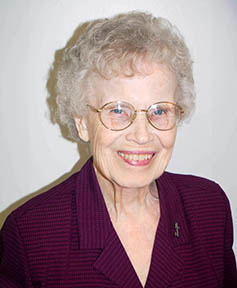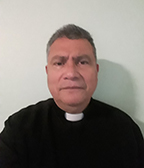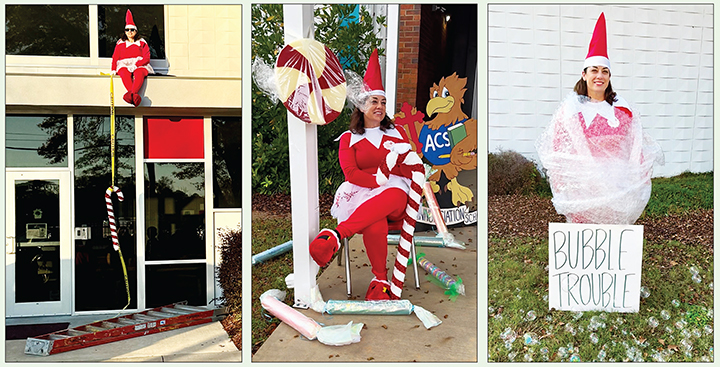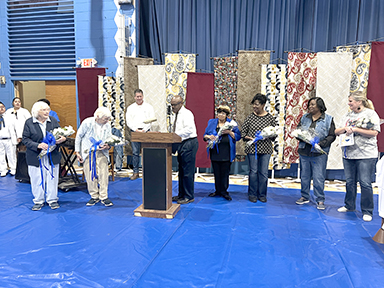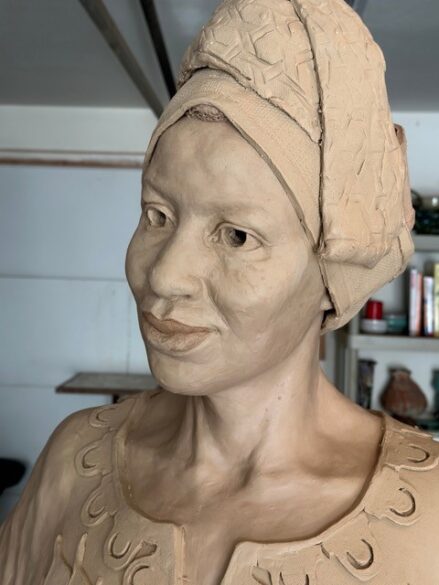SPIRITUAL ENRICHMENT
GLUCKSTADT – St. Joseph, Millions of Monicas – Praying with confidence for our children, each Tuesday from 6:30-7:30 p.m. in the church. Join with other mothers, grandmothers and step-mothers as we pray for our children’s faithful return to the church. Details: church office (601) 856-2054 or email millionsofmonicas@stjosephgluckstadt.com.
St. Joseph, Fatima Five First Saturdays Devotion, Jan. 4, Feb. 1, March 1, April 5 and May 3, 2025. Confession begins at 8 a.m. and ends with a period of meditation beginning at 10 a.m. Details: church office (601) 856-2054.
PARISH, FAMILY & SCHOOL EVENTS
COLUMBUS – Annunciation Parish, “Columbus Sings G.F. Handel’s Messiah,” Tuesday, Dec. 10 at 7 p.m. Tickets available in church office. No charge. Details: church office (662) 328-2927.
GREENVILLE – St. Joseph, Christmas Tree Sale, Monday through Saturday 10 a.m. to 6 p.m. and Sundays 1-6 p.m. Proceeds go to St. Joseph School. Lot located next to Chillie’s store on Hwy 82. Details: church office (662) 335-5251.
JACKSON – Holy Family, Our Lady of Guadalupe Celebration, Sunday, Dec. 15 after 10:30 a.m. Mass. Details: church office (601) 362-1888.
Holy Family, Simbang Gabi Mass with a Novena, Dec. 16-24 at 4 a.m. Come join this Filipino spiritual tradtion on the nine days before Christmas.
Holy Family, Las Posadas, Monday, Dec. 23 at 6 p.m. in Balsar Hall.
JACKSON – St. Peter, Dr. Martin Luther King, Jr. Celebration, Saturday, Jan. 18, 2025 from 1-2:30 p.m. with speaker Constance Slaughter Harvey. You may write a short reflection on how Dr. King’s message impacted your life or society. Submit by Jan. 10. Details: amelia.breton@jacksondiocese.org.
JACKSON – St. Richard, Christmas Candlelighting Celebration for Deceased Loved Ones, Thursday, Dec. 12 at 6 p.m. in Foley Hall. A ceremony of prayer and rememberance is included, followed by refreshments. Details: RSVP to Nancy at (601) 942-2078 or ncmcghee@bellsouth.net.
St. Richard School, Cardinal Christmas at the new campus (4261 I-55 N Frontage Road), Thursday, Dec. 12 from 5:30-8 p.m. Enjoy a chili supper, arts and crafts, Santa, Advent pew auction and Special Kids Art Show. Details: school office (601) 366-1157.
MADISON – St. Joseph School, Gifts of the Season Performance, Sunday, Dec. 15 at 2 p.m. in the Fine Arts Auditorium. Details: school office (601) 898-4800.
St. Joseph School, $10,000 Draw Down, Saturday, Jan. 25 from 6-10 p.m. at Reunion Golf Club. Details: visit www.stjoebruins.com/drawdown.
NATCHEZ – St. Mary Basilica, Lessons and Carols, Sunday, Dec. 15 at 5 p.m. Donations welcome. Christmas party to follow in the Family Life Center. Details: church office (601) 445-5616.
OLIVE BRANCH – Queen of Peace, Cocktails and Catholicism with Father Stephen Huffstetter, SCJ, Friday, Dec. 13, doors open at 6 p.m. Event for 21+. BYOB. Details: register at https://bit.ly/494yJ7L.
Queen of Peace, Christmas Tree Sale, Monday through Friday 4-7 p.m.; Saturday 9 a.m. to 5 p.m.; and Sunday from 12-5 p.m. Fraser trees available from 5-10 feet. Details: church office (662) 895-5007.
TUPELO – St. James, Misa Mesa Musa, Sunday, Dec. 15, potluck dinner at 6:30 p.m. with testimony, scripture and music beginning at 7 p.m. Details: church office (662) 842-4881.
St. James, Family VBS: “I Wonder,” Sunday, Dec. 15 at 10:15 a.m. in Shelton Hall. Details: church office (662) 842-4881.
DIOCESE
HOLY DAY OF OBLIGATION – Feast of the Immaculate Conception on Monday, Dec. 9. Consult your local parish for Mass times.
YOUNG ADULTS – Theology on Tap Karaoke Christmas, Thursday, Dec. 19 from 7-9 p.m. at Mr. Chen’s Restaurant in Jackson. Adults 21+ are welcome for an evening of food, fellowship and karaoke. Guest are responsible for cost of drinks and dinner. Details: amelia.rizor@jacksondiocese.org.
Campus Ministry Winter Retreat, Saturday, Feb. 1 from 10 a.m. to 5 p.m. at St. Joseph Starkville. Join college students from across the diocese for a day of fellowship, games, prayer, song, scripture, Mass and more. Cost: $20. Details: register at https://bit.ly/3OoES58.
Camino de Santiago Pilgrimage, May 12-27. Father Lincoln Dall will be leading this once in a lifetime journey. Space is limited. Email amelia.rizor@jacksondiocese.org for more information.
YOUTH – Diocesan SEARCH Retreat for tenth through twelfth graders, Jan. 17-19, 2025 at Camp Wesley Pines, Gallman. Cost: $125. Search weekend is an encounter that will transform youth and lead to a deeper more fulfilling relationship with the Lord. Details: sign up at https://bit.ly/SEARCH2025 or email abbey.schuhmann@jacksondiocese.org for more information.
DCYC for ninth through twelfth grades, March 21-23, 2025 at the Vicksburg Convention Center. Theme is “Here I am Lord Work in Me.” Keynote presenter is Ali Hoffman with worship led by Josh Blakesley. Featuring talks, music, liturgy, games, small groups and more. Registration deadline Feb. 21, contact your parish to register. Details: contact your individual parish offices or contact Abbey at (601) 949-6934 or abbey.schuhmann@jacksondiocese.org.
WORLD MARRIAGE DAY – Event recognizes couples celebrating special anniversaries in 2025 – 25th, 30th, 40th, 50th, 60th or longer. Celebrations held in Jackson at the Cathedral of St. Peter on Saturday, Feb. 1 at 1 p.m. and in Tupelo at St. James on Saturday, Feb. 8 at 5 p.m. Register by Jan. 7, 2025. Details: email debbie.tubertini@jacksondiocese.org.
PENANCE SERVICES
BROOKHAVEN – St. Francis, Wednesday, Dec. 11 at 6 p.m.
CLINTON – Holy Savior, Wednesday, Dec. 18 at 6 p.m.
CANTON – Sacred Heart, Tuesday, Dec. 10 at 6 p.m.
COLUMBUS – Annunciation, Tuesday, Dec. 17 at 6 p.m.
GREENVILLE – St. Joseph, Monday, Dec. 16 at 5:30 p.m.
HERNANDO – Holy Spirit, Wednesday, Dec. 18 at 7 p.m.
JACKSON – Cathedral of St. Peter, Tuesday, Dec. 17 from 5:30-7 p.m.
MAGEE – St. Stephen, Monday, Dec. 9 at 6 p.m.
MERIDIAN – St. Patrick, Thursday, Dec. 12 at 5:30 p.m. in the Family Life Center.
OLIVE BRANCH – Queen of Peace, Wednesday, Dec. 11 at 7 p.m.
PEARL – St. Jude, Wednesday, Dec. 11 at 6 p.m.
SOUTHAVEN – Christ the King, Tuesday, Dec. 10 at 7 p.m.
OUR LADY OF GUADALUPE – DEC. 12
HERNANDO – Holy Spirit, 8 a.m.
HOLLY SPRINGS – St. Joseph, 7 p.m.
JACKSON – Cathedral of St. Peter, procession at 5:30 p.m. and Mass at 7 p.m.
OLIVE BRANCH – Queen of Peace, Mass at 7 p.m. with dinner following in social hall.
SENATOBIA – St. Gregory, 5:30 p.m.
SOUTHAVEN – Christ the King, Las Manañitas, 5:30 a.m.
Christ the King, 12 p.m. and bilingual celebration at 7 p.m.
TUPELO – St. James, 6 p.m. in Shelton Hall.
